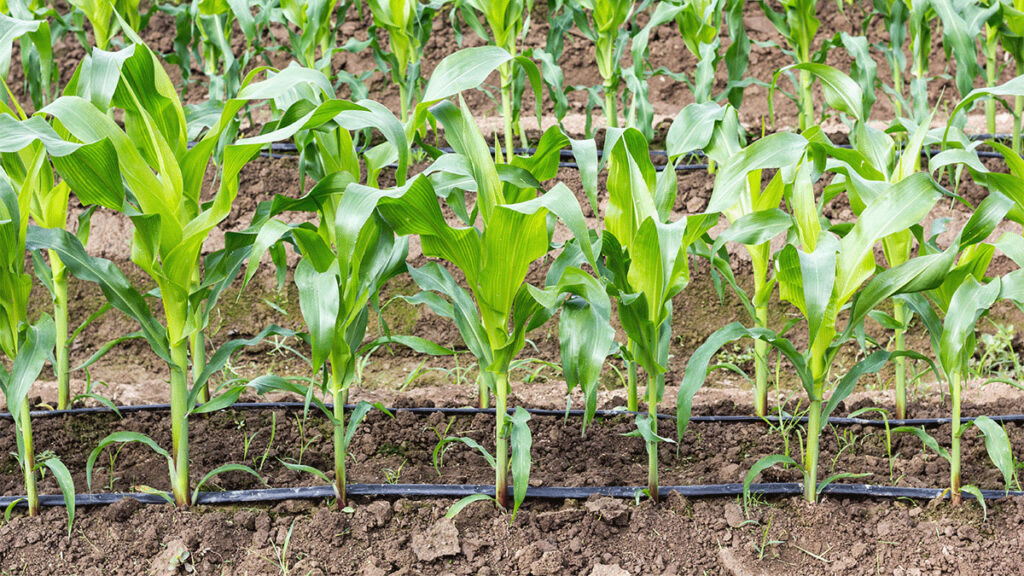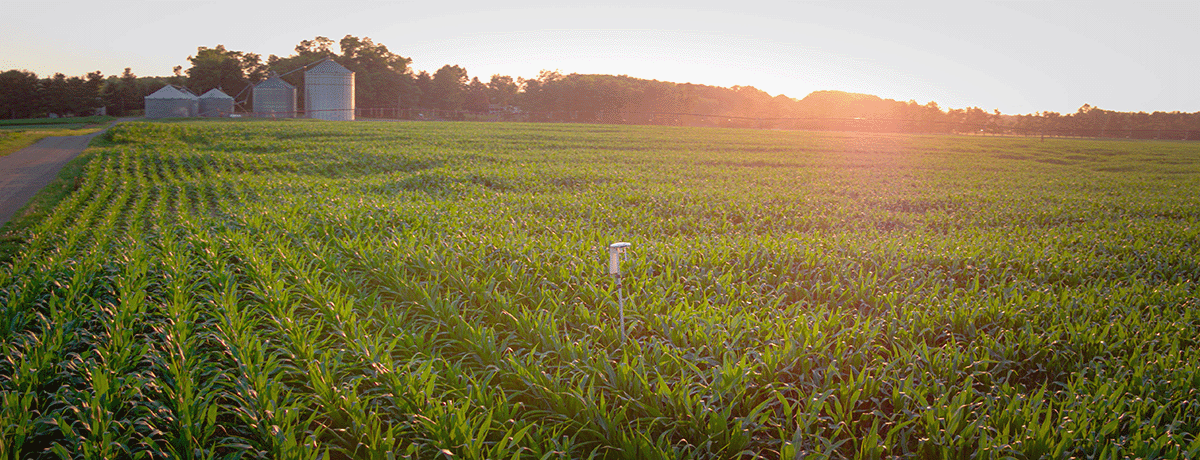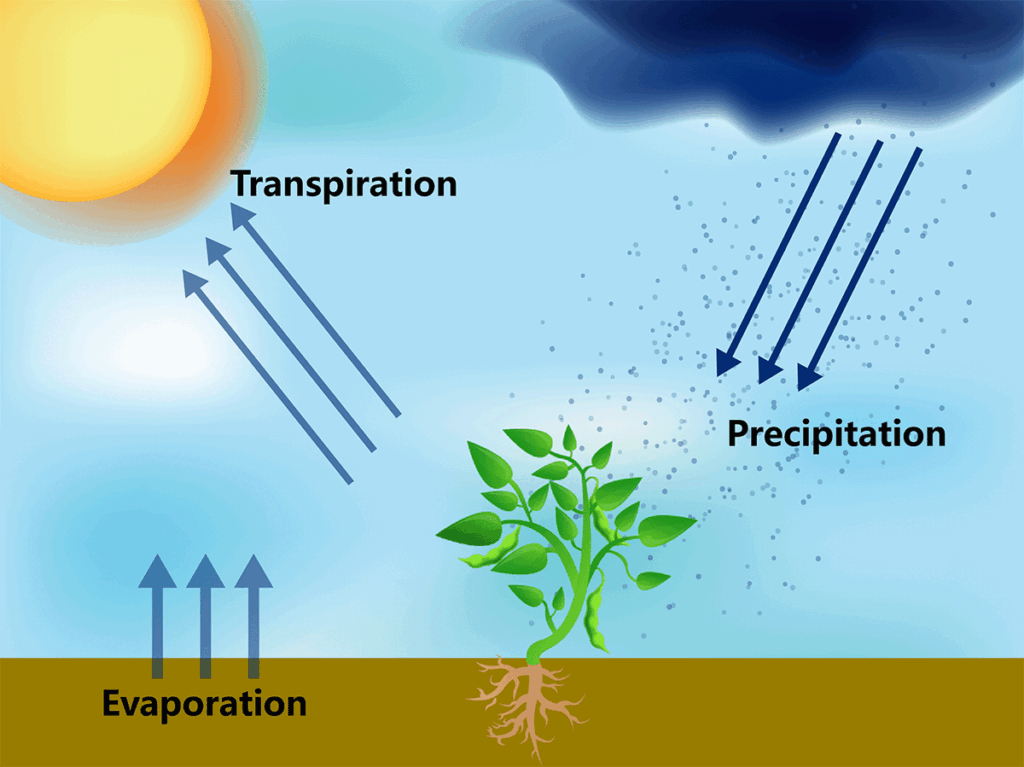The Essential Role of Evapotranspiration in Optimizing Agricultural Irrigation
The need to feed a rapidly growing global population, coupled with the increasing scarcity of freshwater brought on by climate change, has made sustainable water management in agriculture more important than ever. A key variable used to optimize precision in irrigation is evapotranspiration. Understanding and accurately measuring evapotranspiration can significantly improve water use efficiency in agriculture, ensuring sustainability and crop productivity in both the short and long run.
What is Evapotranspiration?
Evapotranspiration (ET) is the combination of two separate processes – evaporation and transpiration – working simultaneously to facilitate a plant’s growth and productivity by regulating its temperature and aiding in nutrient uptake. Evaporation refers to the movement of water to the air from sources such as the soil, plant canopy, and waterbodies. Transpiration refers to the process of water movement through a plant and its evaporation from stomata in leaves, stems, and flowers.
The Importance of Evapotranspiration in Agriculture
In agriculture, ET – also referred to as crop water use – represents the total amount of water a crop loses and therefore must be replaced to ensure healthy growth throughout the season. Understanding evapotranspiration helps farmers make confident decisions based on precise crop water need, which is of key importance for:
- Water Conservation
By accurately measuring ET, farmers are able to optimize irrigation schedules and quantities, applying water only when crops need it most. This method of precise irrigation can conserve water, a critical benefit in regions facing water scarcity or drought conditions. It ensures that crops receive adequate moisture without the wastage associated with over-irrigation, which can lead to runoff, soil erosion, and decreased crop quality. - Crop Health and Yield
Understanding a crop’s ET helps in maintaining the right moisture levels in the soil, which is vital for its health and growth. Over-irrigation can lead to waterlogged conditions that harm plant roots and reduce oxygen availability, leading to root diseases and reduced crop yield. Conversely, under-irrigation stresses plants, impacting their growth and productivity. By using ET data, farmers can strike the perfect balance, promoting optimal crop growth and maximizing yields. - Economic Efficiency
Optimizing irrigation through ET not only enables water conservation but also reduces energy costs associated with water pumping and distribution. It can also lower labor costs through the use of automated, data-driven irrigation systems. This economic efficiency can significantly reduce the overall cost of agricultural production, making farming more sustainable and profitable. - Environmental Protection
Precise irrigation management based on ET data helps in reducing the leaching of fertilizers and pesticides into groundwater. By applying the right amount of water, these substances are more likely to stay within the root zone, where plants can utilize them, rather than being washed away. This practice supports the health of surrounding ecosystems and reduces the environmental footprint of agriculture.
Measuring and Implementing Evapotranspiration in Irrigation Practices
The measurement of ET and its implementation in irrigation practices can involve a variety of methods including weather-based methods, direct measurement, the crop coefficient method, remote sensing, and soil moisture sensors. Each method has its suitable applications depending on the scale, accuracy required, and available resources.
One of the more accurate methods of measuring ET incorporates a plant’s dynamic crop coefficient (Kc), a value that represents the crop type and its growth stage at a given time, to calculate crop-level evapotranspiration or ETc. Some advanced crop intelligence systems use an agronomic formula that incorporates field-level climatic data to derive an ETc value, helping farmers understand their crop’s actual water needs and apply just enough water to replenish their fields.
Technological advancements have made the tools needed to measure evapotranspiration more accessible and affordable than ever, making precision irrigation based on ET data a viable option for farms of all sizes. For example, IoT devices such as the Arable Mark 3 can provide real-time ETc data that helps farmers make informed decisions about when and how much to irrigate.
Learn how renowned winery Clos du Val uses ET to improve its vineyard’s irrigation practices here.
Conclusion
Evapotranspiration plays a key role in maximizing agricultural productivity and profitability while protecting the environment and ensuring the best use of water resources. As the agriculture sector continues to seek sustainable practices in the face of global challenges, understanding and integrating ET data into irrigation management will be key to securing the future of food production. Embracing the tools and technologies that enable precision irrigation will empower farmers to meet the demands of an ever-growing population while stewarding the planet’s precious water resources.


